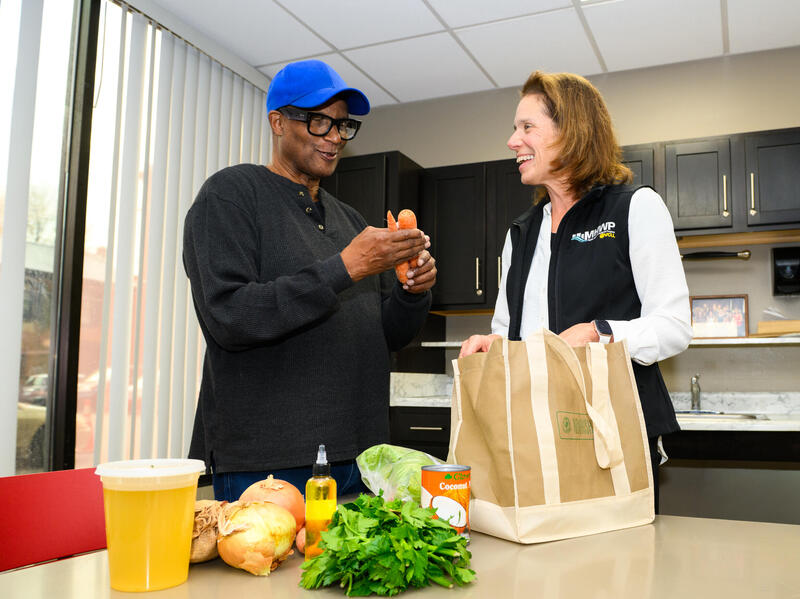June 17, 2004
Scientists scour Rice Center for new life forms
Share this story

Nearly 1,000 species of plants, animals and insects were collected at Virginia Commonwealth University's Inger and Walter Rice Center during Virginia BioBlitz 2004 - a marathon event to log every living thing on the 342-acre site within 30 hours.
A group of 70 accomplished scientists, naturalists and volunteers donated their time to VCU to compile an invaluable record of species the university will use for environmental research and future development of the site. "We couldn't have done such an extensive species survey without BioBlitz," said Anne B. Wright with VCU's Department of Biology and a member of the team collecting aquatic invertebrates. Her team found about 30 species of fish.
In the event's final hours, the teams - visibly exhausted - packed up their camping gear and brought what they collected to a makeshift data collection center on the property for analysis. "We didn't find anything really shocking now, but we have a lot of identification to do over the next year or so and there are always surprises," said event organizer Chris Ludwig, who is chief biologist for the Virginia Division of Natural Heritage and lead the vascular plants team. He said there are probably 500 species of plants on the property and his group found about 290 of them.

Ludwig called the level of expertise that gathered for the event "extraordinarily high." He said VCU received $10,000 to $20,000 worth of consulting services for free. "We do this every year because we love it."
Dr. Art Evans, a Richmond-based beetle expert and research associate of the Smithsonian Institution, found more than 160 species of beetles. "I don't know what half of these are," he said.
More than 200 species of moths were collected by the team headed by Steve Roble, staff zoologist for the Virginia Division of Natural Heritage. He said the collection represents about 10 percent of the state's moth fauna.
The team members spent all 30 hours on the secluded, wooded property located along the James River in Charles City County. Many pitched tents on a bluff overlooking the site's 70-acre lake. VCU provided reliable electricity for the collection center - a former YMCA dining hall - portable restrooms, even a nurse. Volunteers brought in food. "There wasn't a single hitch with logistics," said Ludwig. "VCU did a great job getting the Center ready for us."

The event was co-sponsored by the Virginia Herpetological Society, the Virginia Natural History Society, the Entomological Society of Washington, The Virginia Academy of Science the Richmond Herp and Bug Society and the Virginia Native Plant Society. Other participating institutions and societies included: Smithsonian Institution, USDA-ARS, Virginia Department of Conservation and Recreation, Virginia Department of Game and Inland Fisheries, Virginia Museum of Natural History, Virginia Commonwealth University, University of Richmond, Hampton University, Richmond Audubon Society.
For more information, visit the 2004 Virginia BioBlitz Web site at http://fwie.fw.vt.edu/vnhs/bioblitz2004.htm.
Subscribe to VCU News
Subscribe to VCU News at newsletter.vcu.edu and receive a selection of stories, videos, photos, news clips and event listings in your inbox.







